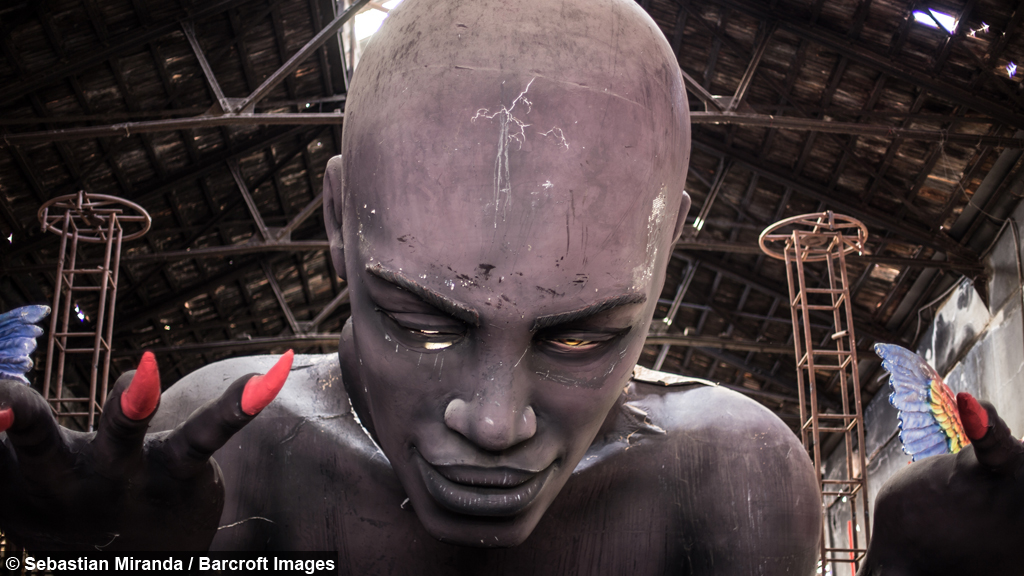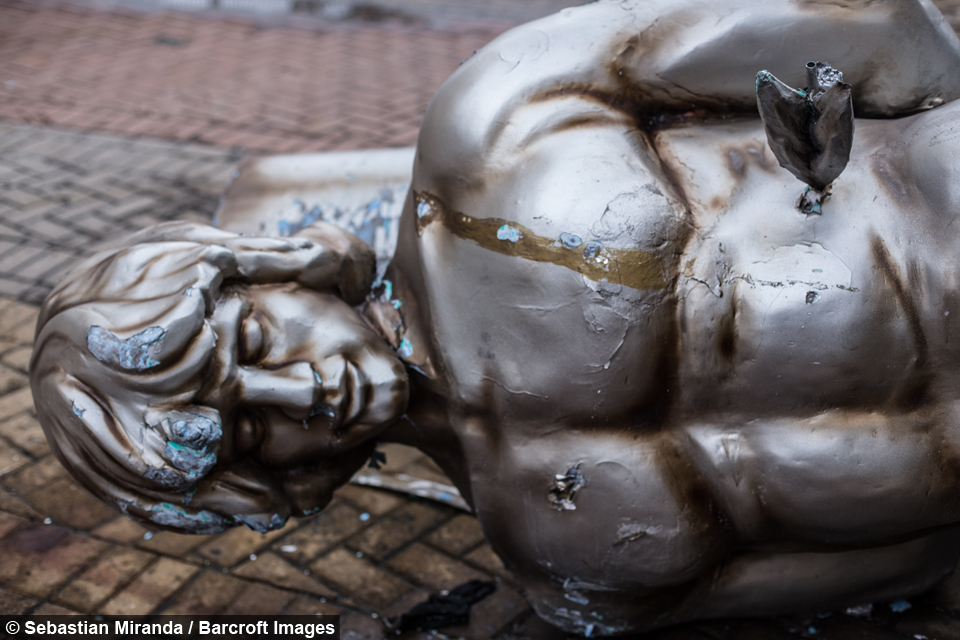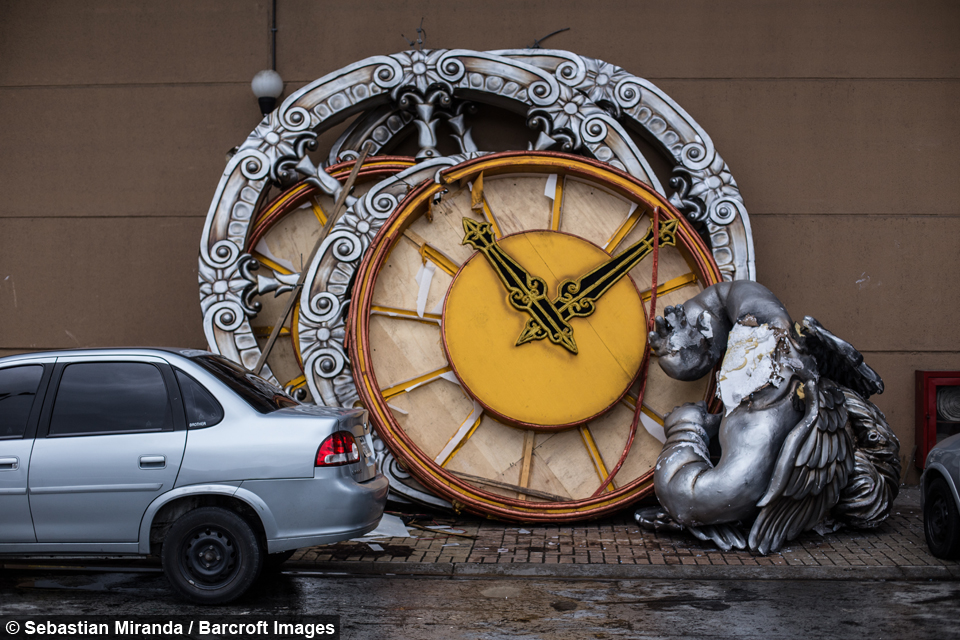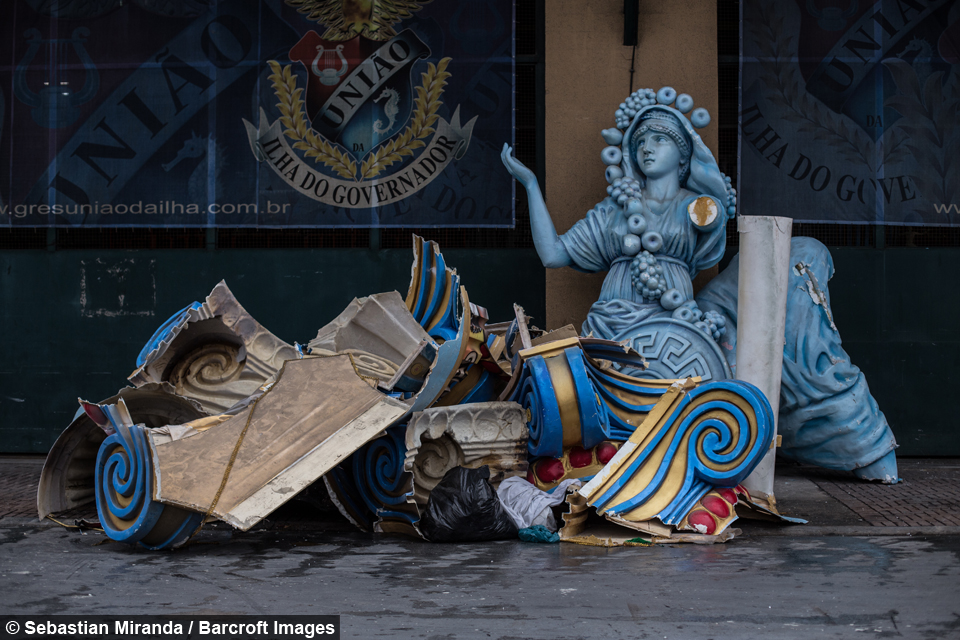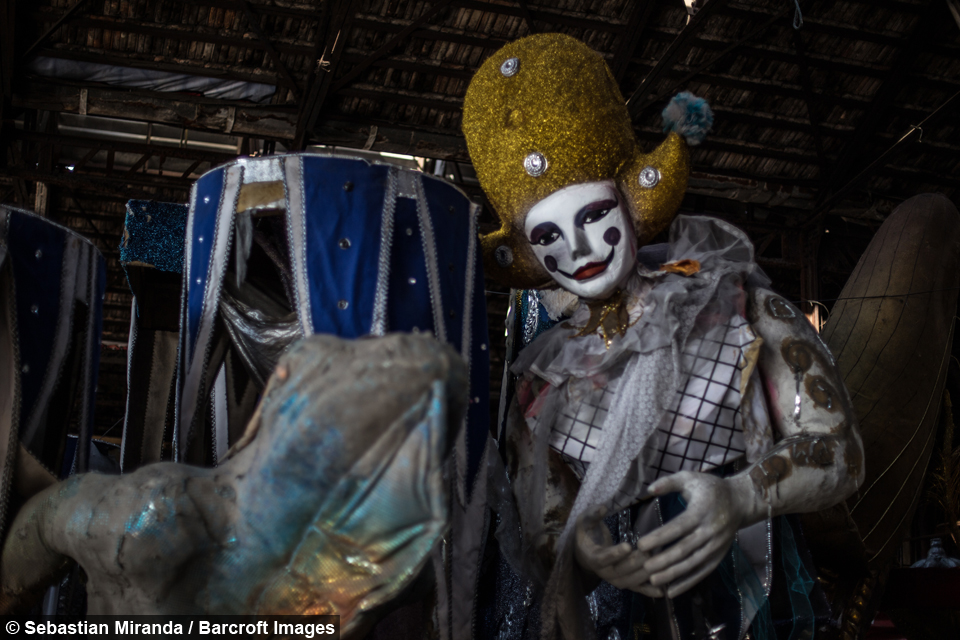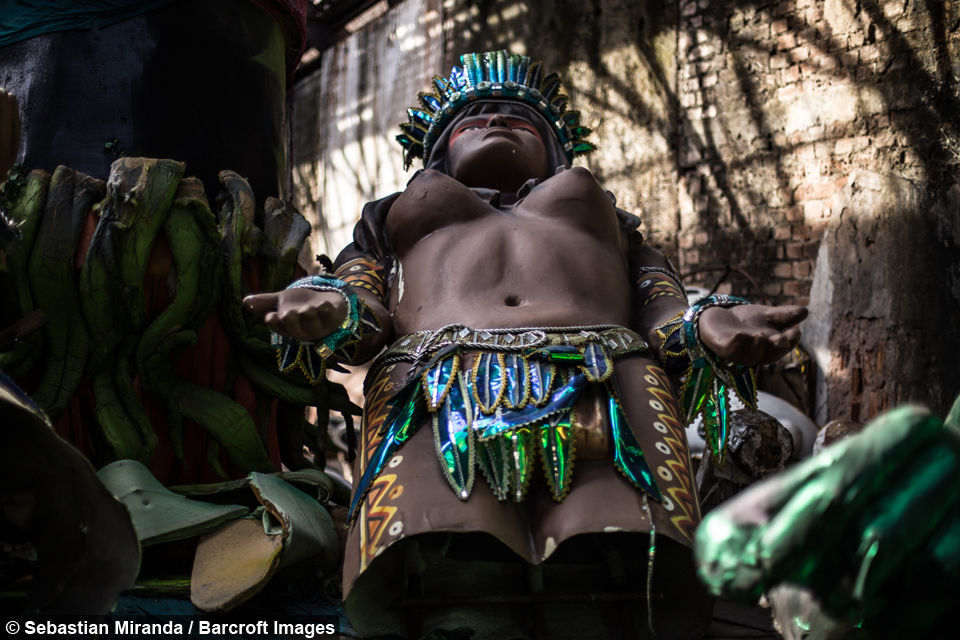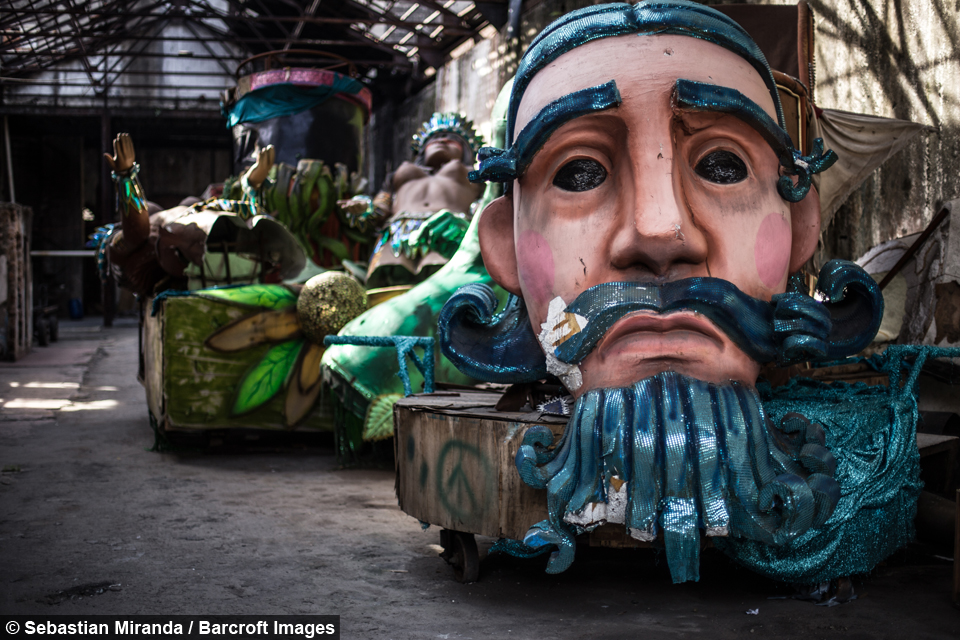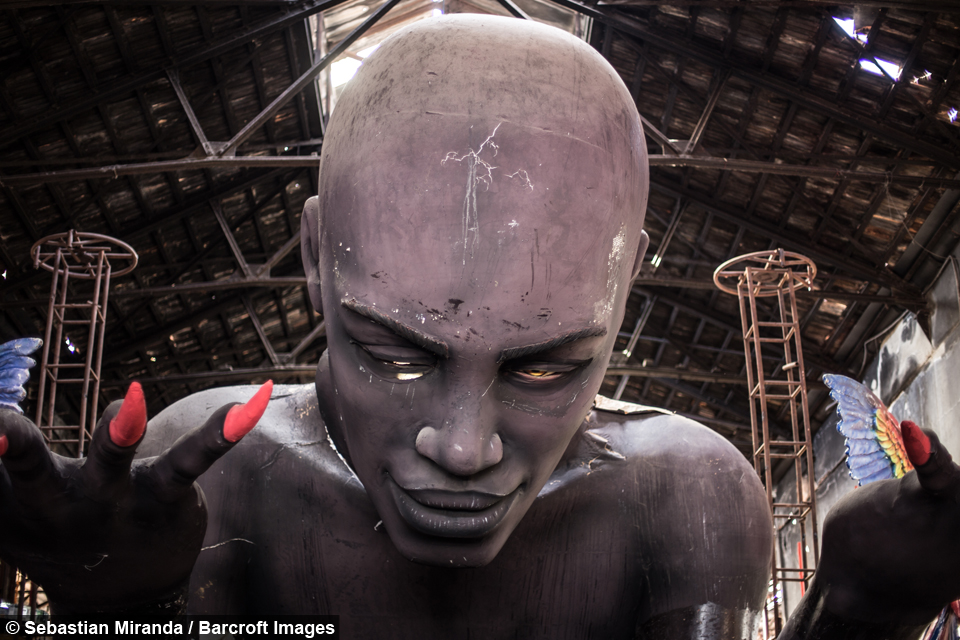The Fate of the Floats: The aftermath of Rio de Janeiro Carnival
By Shannon Lane @shannonroselane
Scroll down for the full story
Dating back to 1723, the Rio Carnival in Brazil is held 40-days before Easter, and considered the largest carnival in the world.
For five days the larger-than-life carnival floats travel through the Sambadrome and streets of Rio, dwarfing the 2 million revelers and dancers.
The aftermath of this explosive celebration of light, music and colour are somber backstreets and warehouses, containing the forgotten stars of the show.
French photographer Sebastian Miranda visited the building complex known as ’The City of Samba’ in Rio de Janeiro in September 2016.
The City of Samba is the bustling hub of samba schools and workshops, producing the elaborate costumes and floats specifically for the popular carnival.
It is also the location where the floats and adornments are then deposited following their moment in the limelight.
The photographer said: “The floats are being abandoned with the passing of years, some of them are recycled and reused, others are forgotten.
“It is a strong and contradictory message, the City of Samba is synonymous with happiness and enjoyment; these desolate floats seem to say otherwise.”
The once vibrant floats depicting images of powerful Gods and eternally smiling clowns are now forced to accept their fate, as they begin to rust in the place they were once created.
Sebastian Miranda said: “The floats which surprised me the most were those who had a face.
“They seemed to look at me with sad eyes, like a real being who has been abandoned.”
